
Ibrain(OA期刊)(国际刊号) 知网目次
- 主管单位:
- 主办单位:
遵义医科大学附属医院
- 国际刊号:
2313-1934;EISSN 2769-2795
- 国内刊号:
- 学科分类:
- 字数:
-
- 有无基金:
- 周期:
国际号刊-季刊
- 特殊属性:
外文期刊
- 电话:
0851-28608507(官网电话)
- 邮箱:
Ibrain@idragon.org.cn(202401期)
- 复合因子:
0
- 综合因子:
0
- 收录:
知网目次
- 级别:
期刊简介
《Ibrain》期刊已被查看: 次
更新频次
单位占比
一作占比
投稿指南
1、该刊只有国际刊号。
2、投稿方式:在线投稿。
3、刊内网址:(202401期)
https://onlinelibrary.wiley.com/journal/27692795
4、投稿系统:https://mc.manuscriptcentral.com/ibra
5、主办单位网址:
http://www.zmuhospital.com/Article/Class-334.html
(遵义医科大学附属医院)
6、刊内邮箱:Ibrain@idragon.org.cn
7、官网电话:0851-28608507
8、期刊刊期:季刊,逢季末月出版。
9、微信公众号:遵义医科大学附属医院(ZYykdxffyy)
2024年5月15日星期三
《Ibrain》投稿指南
【官网信息】
Ibrain
Author Guidelines
1. SUBMISSION
Authors should kindly note that submission implies that the content has not been published or submitted for publication elsewhere except as a brief abstract in the proceedings of a scientific meeting or symposium.
Once the submission materials have been prepared in accordance with the Author Guidelines, manuscripts should be submitted online at https://mc.manuscriptcentral.com/ibra.
Click here for more details on how to use ScholarOne.
Data protection:
By submitting a manuscript to or reviewing for this publication, your name, email address, and affiliation, and other contact details the publication might require, will be used for the regular operations of the publication, including, when necessary, sharing with the publisher (Wiley) and partners for production and publication. The publication and the publisher recognize the importance of protecting the personal information collected from users in the operation of these services, and have practices in place to ensure that steps are taken to maintain the security, integrity, and privacy of the personal data collected and processed. You can learn more at https://authorservices.wiley.com/statements/data-protection-policy.html.
Preprint policy:
Please find the Wiley preprint policy here.
Ibrain will consider articles previously available as preprints. Authors are requested to update any pre-publication versions with a link to the final published article. Authors may also post the final published version of the article immediately after publication.
For help with submissions, please contact: Ibrain@idragon.org.cn
2. AIMS AND SCOPE
Ibrain is an international and open access journal in the field of neuroscience. The journal publishes the advanced research about brain function, brain network, brain structure and brain imaging, and provides a communication platform about basic & translational science and clinical practice for neuroscientists. Ibrain welcomes submissions all over the world that will benefit the development of neuroscience.
Ibrain is interested in the topics including but not limited to clinical medicine, molecule diagnostics, epigenetics/genetics, cell biology, drug discovery, evolutionary medicine, nanotechnology or artificial intelligence. The journal is focused on clinical and experimental advances that provide the disease characteristics, pathogenic mechanism or medical techniques.
Topics of interest include, but are not limited to:
Cellular and molecular neuroscience
Regeneration and plasticity
Development and stem cells
Cognition and psychiatric disorders
Neurodegeneration and repair
Neurodegenerative diseases
Stroke
Brain injury
Spinal cord injury
Cerebral ischemia
Brain tumor
Nerve injury
Head injury
Neural circuit
Neural technology
Neuropathy
Cerebral ischemia and hypoxia
Head and face disease
Neuralgia
3. MANUSCRIPT CATEGORIES AND REQUIREMENTS
Original article is the full-length report of current research within any area covered in the journal’s scope, and aims to address novel findings and make significant contribution to the scientific knowledge in neuroscience areas. Typically, the research will provide insight into an as yet unknown mechanism or poorly understood process, constitute a highly significant contribution to our understanding of neuroscience, and be of general interest to the neuroscience community. Research articles are typically 6000 words in length, with up to 12 figures and tables in total, and no limitation on the number of references.
Reviews, including systematic reviews and meta-analyses, are typically written by leading experts in the filed within the journal’s scope. Reviews papers help specialists to keep up with the current state of knowledge in a specific research area and provide informative message for non-specialists. Reviews aim to be a critical and concise overview of the most recent advances in a specific research field. Reviews will typically be no limitation on words in length, with up to 8 figures and tables in total, and no limitation on the number of references.
Comments discuss published findings and ideas from a personal viewpoint. They are more forward looking and /or speculative than Reviews. Comments can be submitted either by the invitations from the Editors or by the authors themselves. Both types will undergo the peer-review process prior to acceptance. Comments are typically 3000 words in length, with up to 4 figures and tables in total and no more than 70 references.
Case reports emphasize all aspects of clinical neuroscience. They should describe: (a) unique cases that may represent a previously undescribed condition; (b) unexpected association of two or more diseases; (c) adverse or unexpected treatment response; (d) any other clinical observation based upon well-documented cases that provides important new information; or (e) a new or revised clinical technique or procedure.
Letter provides the rapid and concise report of a novel discovery that is brief in nature and should be of general interest to the field of neuroscience. Letters are typically 1200 words in length excluding, references, figures and tables, with up to 1 figures and tables in total, and no more than 10 references.
Methods are news-style reports, and are published a few times a year to review techniques and technologies in fast-moving fields of research. For further information, contact Ibrain@idragon.org.cn.
4. PREPARING THE SUBMISSION
Cover Letters
Authors may include recommended or non-recommended reviewers in the cover letter. Cover letters are not mandatory; however, they may be supplied at the author’s discretion.
Parts of the Manuscript
The manuscript should be submitted in separate files: main text file; figures.
Main Text File
The text file should be presented in the following order:
A short informative title containing the major key words. The title should not contain abbreviations (see Wiley's best practice SEO tips);
A short running title of less than 40 characters;
The full names of the authors;
The author's institutional affiliations where the work was conducted, with a footnote for the author’s present address if different from where the work was conducted;
Abstract and keywords;
Main text;
Ethical statement
Acknowledgments;
Conflict of interest
Funding
Transparency statement
Authors' contribution
References;
Tables (each table complete with title and footnotes);
Figure legends;
Appendices (if relevant).
Figures and supporting information should be supplied as separate files.
For the benefit of the reviewers and editors, please include line numbers in your main text files.
Abstract
Please provide an abstract of 250 words containing the major keywords summarizing the article.
Keywords
Please provide three to six keywords.
Main Text
The journal uses British/US spelling; however, authors may submit using either option, as spelling of accepted papers is converted during the production process.
Footnotes to the text are not allowed and any such material should be incorporated into the text as parenthetical matter
……
更多详情:
https://onlinelibrary.wiley.com/page/journal/27692795/homepage/author-guidelines
上一篇:赣南医学院学报下一篇:语言治理学刊(集刊)(不收版面费审稿费)
《Ibrain》同类神经|精神病学期刊
-
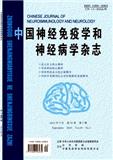
中国神经免疫学和神经病学杂志
科核,武B+
CN中文-双月刊影响因子0.963
-
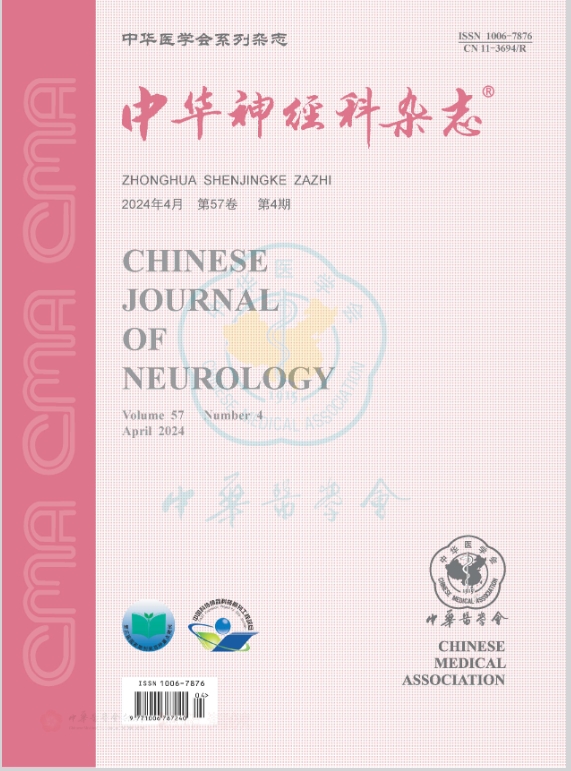
中华神经科杂志
北核,CSCD,科核,武A,高T2
CN中文-月刊影响因子2.077
-
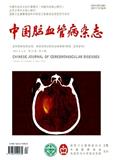
中国脑血管病杂志
北核,科核,CSCD扩,武A,高T3
CN中文-月刊影响因子1.261
-
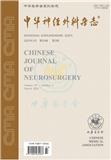
中华神经外科杂志
北核,CSCD,科核,高T2,武B+
CN中文-月刊影响因子1.26
-
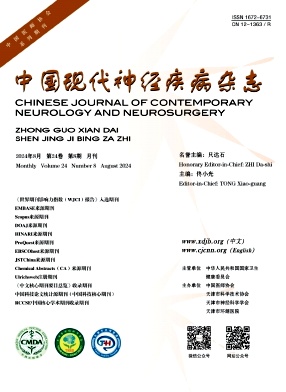
中国现代神经疾病杂志
北核,科核,武A-,CACJ-核心
CN中文-月刊影响因子0.986
-
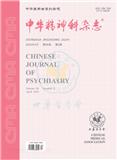
中华精神科杂志
北核,CSCD,科核,武A-
CN中文-月刊影响因子1.734
-
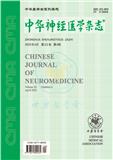
中华神经医学杂志
北核,科核,CSCD扩,高T3,武B+,CACJ-扩展
CN中文-月刊影响因子1.128
-

中华脑科疾病与康复杂志(电子版)
科核
CN中文-双月刊影响因子0.408
常见问题
-
Ibrain杂志社官网、联系方式是什么?
Ibrain杂志社官网:https://onlinelibrary.wiley.com/journal/27692795
投稿网址:https://mc.manuscriptcentral.com/ibra联系电话:0851-28608507(官网电话)
投稿邮箱:Ibrain@idragon.org.cn(202401期) -
Ibrain杂志是核心期刊么?
Ibrain不是核心期刊,级别是:, 是:神经|精神病学分类下的知网目次收录的期刊。
-
请问你们是Ibrain杂志社吗?
我们不是《Ibrain》杂志社。本站主要从事期刊信息展示与期刊推荐,不是任何杂志官网,直投稿件请联系杂志社。本站仅提供免费的学术指导、论文辅导、期刊投稿信息整理收集服务。
-
你们指导服务后可以保证文章被发表吗?
期刊发表的成功与否,主要取决于文章内容的质量。编辑老师会根据研究领域、创新性等多因素进行考量。我们会帮助您理解期刊的发表要求,助力提升发表几率,从而增加发表的机会。
-
晋级论文能否在报纸上发表?
在学术界,论文的发表往往被视为研究者职业发展的重要一环。晋级论文,即为了获得更高职称或学术地位而撰写的学术论文,通常需在专业期刊上发表。然而,许多人可能会问
